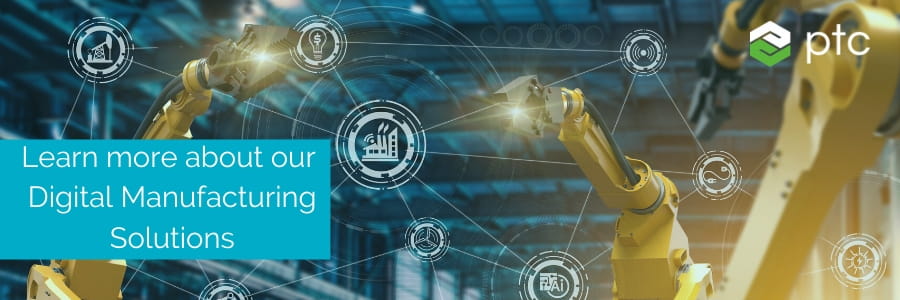What Is Digital Manufacturing and How Has It Evolved?
Over the past two decades, technology has come to play an invaluable role in our plants and factories. But to understand this revolution and its impact, we should first ask: What is digital manufacturing, and how has it changed over time? The digital manufacturing definition can vary; however, at a high level it means the integration of computers and data into the manufacturing process.
What Digital Manufacturing Enables
More interesting than the question, “What is digital manufacturing?” is the examination of what it does for your business. In a factory setting, it provides the ability to produce more, faster, and at a lower cost. These goals are met through a number of different practices and strategies.
Mass Customization
Digital manufacturing extends computer-assisted control and automation over customized versions of products, without having to create an entirely new production line or process. The consequences of that simplicity are profound—it represents a shift from mass production to mass customization, and the ability to manufacture physical products in smaller and smaller lots to meet the customized needs for each order. Designs can now be taken as iterative and flexible, instead of fixed. They can also be customized and adjusted in light of customer feedback.
Lean Manufacturing
Industrial internet of things (IIoT) machine sensors can now deliver constant, real-time feeds of performance metrics to powerful, intuitive dashboards for human analysis and action.
Using remote monitoring technology, technicians can optimize machine use, anticipate failures, and administer preventative maintenance. Once implemented, these improvements can serve as benchmarks for the next set of optimizations, unlocking new levels of operational improvements. Machine data can be integrated with other data sets such as ERP, PLM, weather, and geospatial information to fine-tune every detail of production—including how every element of a complex supply chain interacts.
How Digital Manufacturing Has Evolved
We are in the midst of a transformative era in manufacturing. But to understand just how seismic the change is, it’s important to understand how far we’ve come. What started as a computer numerical control (CNC) production in 1949, progressed over the last century.
1950s: CNC
Computer numerical control (CNC) production was introduced in 1949 by John T. Parsons. He designed a system where machine tools followed geometric instructions input by a punch card. MIT advanced CNC’s successor, a universal programming language still in use today—that could automate the use of Numerical Code (NC) instructions.
1990s: CAD, CAM and PLM
By the 1990s, computers were capable of rendering complex 3D designs using computer aided design (CAD) software. They could then translate those designs into CNC instructions using computer aided manufacturing (CAM). At the same time, product lifecycle management (PLM) software matured, enabling manufacturers to digitally manage their supply chain. Using PLM technology, Chrysler became the lowest-cost auto-producer by the middle of the decade.
2010s: IIoT and AR
The addition of new technologies like IIoT, augmented reality (AR), robotics, and big data has enabled us to digitize the entire process, wielding processing power that was unimaginable back when Parsons first developed his punch cards. Already, we’re seeing unprecedented efficiency gains, drastically shortened lead times, and the development of entirely new business models.
Looking to the Future
Ultimately, the answer to the question “What is digital manufacturing?” continues to evolve, as manufacturers embrace innovative new technologies. As physical products become more connected, new opportunities arise. Digitization will continue to take root across manufacturing enterprises, allowing every single element of the production process to be optimized at every stage of the supply chain. Interfaces will become more intuitive, buoyed by the spread of AR and further improvements in processing power. Big data analytics provide deeper insights, resulting in even greater production efficiency.
Digital manufacturing has already transformed the factory floor. With technology advancing at an accelerating rate, those shop floors may barely by recognizable ten years from now.
Find out how you can embrace digital manufacturing, even with legacy equipment—and do more with what you have. Learn more about PTC’s Digital Manufacturing Solutions or download our infographic, Smarter Manufacturing Builds on Your Current Plant Floor.
